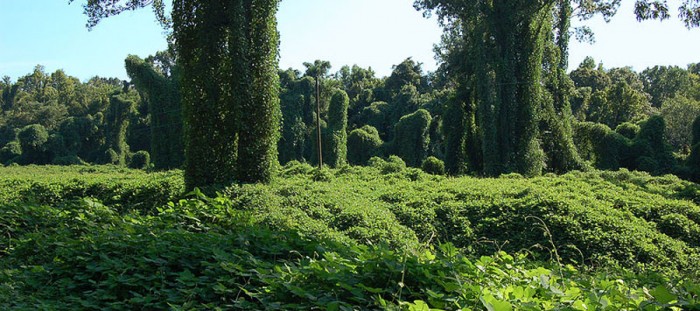It’s no secret that non-native invasive plant (and animal) species have had a huge impact on our natural landscapes and ecosystems. With their relentless growth habits and lack of natural checks and balances, plants like kudzu, wisteria, privet and honeysuckle have effectively overtaken huge swaths of our landscape.
From an ecological standpoint, the results are often disastrous – habitat is lost and native species are crowded out, resulting in a relatively sterile, unproductive, and alien landscape. Unfortunately, most examples are closer to home than one would expect. You only have to go to your nearest recent development site or motorway to see the devilish plants in action.
Their economic effect is nothing to scoff at either. Most academic studies guesstimate the annual cost of all invasive species to be a 12-digit number. Yes, that’s billions. With a “B.” For us landscape architects, invasive species are a constant headache. The same plants that were installed with good intentions decades ago have exploded into a nation-wide problem. And the worst part: there’s nothing uglier than a monoculture of undesirable, unkempt plants.
Restoration efforts range from community work days to hardcore aerial chemical applications. Imagine being ‘choppered in to acres of kudzu in a search and destroy mission for the mother crown. Sounds like the long lost horticultural installment of the Rambo series, doesn’t it?
Here in the office, we make a conscious effort to design our landscapes with a responsible and ecologically sensitive approach. Click here to view pictures from Field Sport Concepts’ affiliate McKee Carson’s project at the Charlottesville Union Bank & Trust, a redesign that showcases and celebrates the urban site’s inherent properties and indigenous flora.
If your property could use a helping hand in its transformation from exotic jungle to native oasis, we’d be more than happy to help.
Photo courtesy of Gsmith

